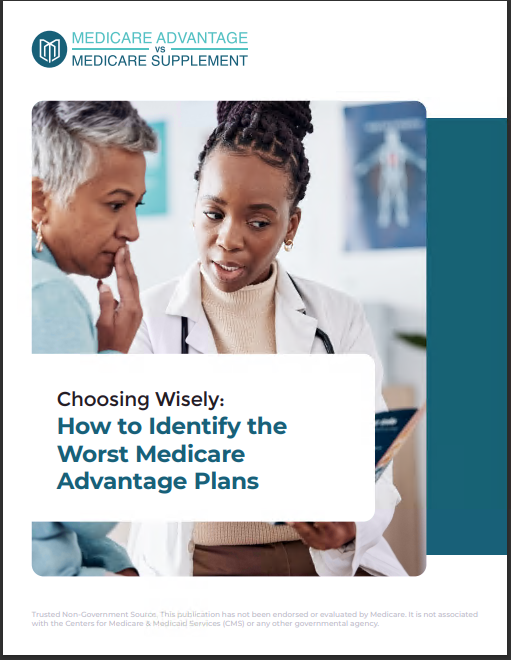Key Takeaways
-
Understanding key enrollment periods can help you avoid late penalties and ensure you get the right coverage when you need it.
-
Missing the deadlines for Medicare enrollment could mean delayed coverage or higher premiums down the road.
Know Your Enrollment Periods: The Right Timing Makes All the Difference
When it comes to Medicare, timing is everything. Whether you’re enrolling for the first time or making changes to your existing plan, knowing when to act can save you a lot of stress, money, and headaches. The 2025 enrollment cycle is no exception, and the rules and dates are set to ensure everyone gets fair access to the coverage they need.
To make things easier, we’ve broken down the most important enrollment periods you need to know. From your Initial Enrollment Period (IEP) to the Annual Enrollment Period (AEP) and everything in between, we’ve got you covered. Let’s get started!
The Initial Enrollment Period (IEP): Your First Chance to Enroll
If you’re new to Medicare, the Initial Enrollment Period is your first opportunity to sign up. Your IEP lasts for 7 months: it starts 3 months before the month you turn 65, includes your birthday month, and ends 3 months after your birthday month.
Why It’s Important:
-
Avoid Late Penalties: Missing your IEP can lead to penalties that will stick with you for as long as you have Medicare.
-
Start Coverage on Time: Enrolling early ensures your Medicare benefits kick in without delay.
Here’s how it works:
-
If you enroll in the 3 months before your birthday month: Coverage begins on the first day of your birthday month.
-
If you enroll during your birthday month: Coverage starts the following month.
-
If you enroll in the 3 months after your birthday month: Coverage will be delayed by 1-2 months, so don’t wait!
Pro Tip: Mark your calendar 3 months before your 65th birthday to ensure you start the process on time.
The General Enrollment Period (GEP): Your Second Chance
If you missed your Initial Enrollment Period, don’t worry—you get a second chance during the General Enrollment Period (GEP). This runs from January 1 to March 31 each year.
Key Details:
-
Coverage Start Date: If you enroll during the GEP, your Medicare coverage will start on July 1.
-
Late Penalties Apply: Unfortunately, missing the IEP means you may have to pay a penalty for Medicare Part B or Part D premiums.
While the GEP is a safety net, it’s always better to sign up during your IEP to avoid delays and penalties.
The Annual Enrollment Period (AEP): Make Changes to Your Coverage
If you’re already enrolled in Medicare and want to make changes to your plan, the Annual Enrollment Period (AEP) is for you. This runs from October 15 to December 7 every year.
What You Can Do During AEP:
-
Switch from Original Medicare to a Medicare Advantage Plan (Part C).
-
Change from one Medicare Advantage Plan to another.
-
Add or drop a Medicare Part D (Prescription Drug) plan.
-
Switch Part D plans if your medication needs have changed.
Why Timing Matters:
-
Changes Take Effect January 1: Any changes you make during AEP will go into effect on January 1 of the following year.
-
Plan Adjustments: Medicare plans change each year, so it’s important to review your options to ensure your plan still meets your needs.
Set a reminder to review your plan in late September, so you’re ready to make any changes during the AEP.
Medicare Advantage Open Enrollment Period (MA OEP): Switch Plans If Needed
If you already have a Medicare Advantage Plan, there’s a special window called the Medicare Advantage Open Enrollment Period (MA OEP). This runs from January 1 to March 31.
What You Can Do:
-
Switch to another Medicare Advantage Plan.
-
Drop your Medicare Advantage Plan and go back to Original Medicare.
-
Enroll in a Part D (Prescription Drug) plan if you return to Original Medicare.
Keep in mind, you can only make one change during this period. Once you switch plans, you’re locked in for the rest of the year.
Special Enrollment Periods (SEPs): Exceptions for Life Events
Sometimes, life throws unexpected changes your way. If you experience certain qualifying events, you may be eligible for a Special Enrollment Period (SEP) outside of the regular enrollment timelines.
Qualifying Life Events:
-
Losing Employer Coverage: If you lose health coverage from your employer or union, you’ll have an 8-month window to enroll in Medicare.
-
Moving: If you move outside your current plan’s service area, you can switch plans.
-
Medicaid Eligibility: If you become eligible for Medicaid, you may qualify for a SEP to adjust your Medicare coverage.
The length of your Special Enrollment Period will depend on the qualifying event, so act quickly to avoid gaps in your coverage.
Late Enrollment Penalties: Why Missing Deadlines Can Cost You
Missing your enrollment periods doesn’t just delay your coverage—it can also hit you with penalties. Here’s a quick breakdown:
Part B Penalty:
If you don’t enroll in Part B during your IEP, you’ll pay a penalty equal to 10% for each 12-month period you were eligible but didn’t sign up. This penalty lasts as long as you have Part B.
Part D Penalty:
For Medicare Part D (Prescription Drug Coverage), the penalty is 1% of the national base beneficiary premium for each month you went without creditable prescription drug coverage.
The bottom line? Don’t miss your deadlines—it can save you money in the long run.
What About Medicare and Employer Coverage?
If you’re still working at age 65 and have health coverage through your employer, you may wonder if you still need to enroll in Medicare. Here’s what you need to know:
-
Small Employers (Fewer Than 20 Employees): You need to enroll in Medicare Part A and Part B during your IEP, as Medicare will be your primary coverage.
-
Large Employers (20 or More Employees): You may delay Part B enrollment without penalty as long as you have creditable coverage through your employer.
Always check with your employer’s HR department to confirm whether your current coverage qualifies as creditable.
Making Enrollment Easy: Tips to Stay on Track
Enrolling in Medicare doesn’t have to be complicated. Here are a few tips to keep you on track:
-
Mark Your Calendar: Set reminders for key dates like your IEP, AEP, and GEP.
-
Review Your Options Annually: Plans change, and so do your healthcare needs—review your coverage every year.
-
Ask Questions: If you’re unsure about your options, reach out for help.
-
Gather Important Documents: Have your Social Security card, proof of age, and health insurance details ready to speed up the enrollment process.
Stay Ahead of the Medicare Enrollment Game
Timing your Medicare enrollment correctly is one of the most important steps you can take to secure the healthcare coverage you need. Whether it’s your Initial Enrollment Period, the Annual Enrollment Period, or a Special Enrollment Period triggered by life events, staying aware of deadlines will save you from costly penalties and coverage delays.
Take charge of your Medicare journey by planning ahead and understanding your options. The right timing can make all the difference for your healthcare in 2025 and beyond.










